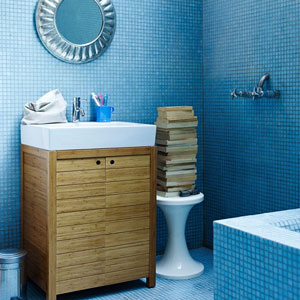
Resources
- Home
- Cheap Waterproof Walls
- How to Waterproof Basement Walls
- How to Waterproof Walls
- Waterproof Baesment Walls
- Waterproof Basement Walls
- Waterproof Bathroom Walls
- Waterproof Brick Walls
- Waterproof Concrete Walls
- Waterproof Exterior Walls
- Waterproof Foundation Walls
- Waterproof Garage Walls
- Waterproof Kitchen Walls
- Waterproof Wall Paint
- Waterproof Wall Panels
- Waterproof Walls Coating
- Waterproof Walls Companies
- Waterproof Walls Covering
- Waterproof Walls DIY
- Waterproof Walls FAQs
- Waterproof Walls Prices
Waterproof Bathroom Walls
There are a variety of ways to waterproof bathroom walls. The most popular options include:
- Water Resistant Wall Boards
- Tile
- Specialty Wallpaper
- Stucco
- Venetian Plaster
Of these options, tile is generally considered to be the most effective. Not only does it work well, but it's also a very affordable option. While tile itself works well for waterproofing, you can take it one step further by applying a sealant to it. Once the tile in your bathroom is sealed, you will have no trouble keeping this space free of mold and other common problems related to moisture.
How to Repair Existing Bathroom Wall Damage
The first step to waterproof bathroom walls is to see if there is any damage in the walls. You will want to look at the tiles and see if you notice any grout missing. Even if you only see small chips or cracks, it's worth your time to fix these issues. Taking care of these seemingly minor problems will ensure that the end result of your waterproofing is as effective as possible. If you do identify issues, you can use silicone grout sealer to fix them. After using a brush to apply the first coat of sealer, give it at least an hour to dry.
Preparing to Waterproof Bathroom Walls
When the sealer is fully dry, you can apply the second coat. You'll then want to wait for at least 2 days before continuing. Once you've given your repairs plenty of time to fully set, the next step is to thoroughly scrub the walls. This can be done with a mixture of soap and water. If the walls are already fairly clean, you can use a sponge. Otherwise, you’ll want to use a scrubbing brush. If you find that there are stains or other debris that won't come off, you can use an actual cleaning solution to get rid of them.
The Waterproofing Process
After you finish cleaning off the walls, you will be ready to waterproof them. This can be done with any type of general porcelain sealer. If your bathroom walls happen to feature a different material, make sure you choose a sealant that's specifically designed for it. The easiest way to evenly apply the porcelain sealer is to use a sprayer or roller. This will ensure that you are able to cover the entire wall without missing any spots.
Once you've used a sprayer or roller to spread the sealer over the entire wall, you will want to switch to a small brush. This tool will allow you to finish the application by reaching the corners. You'll then need to let the sealant dry. Because different products take different amounts of time to dry, consult the instructions on the one you purchased for specific instructions. After waiting for the indicated amount of time, you can follow the same steps to apply the second coat. In some cases, it can be a good idea to also do a third layer.
